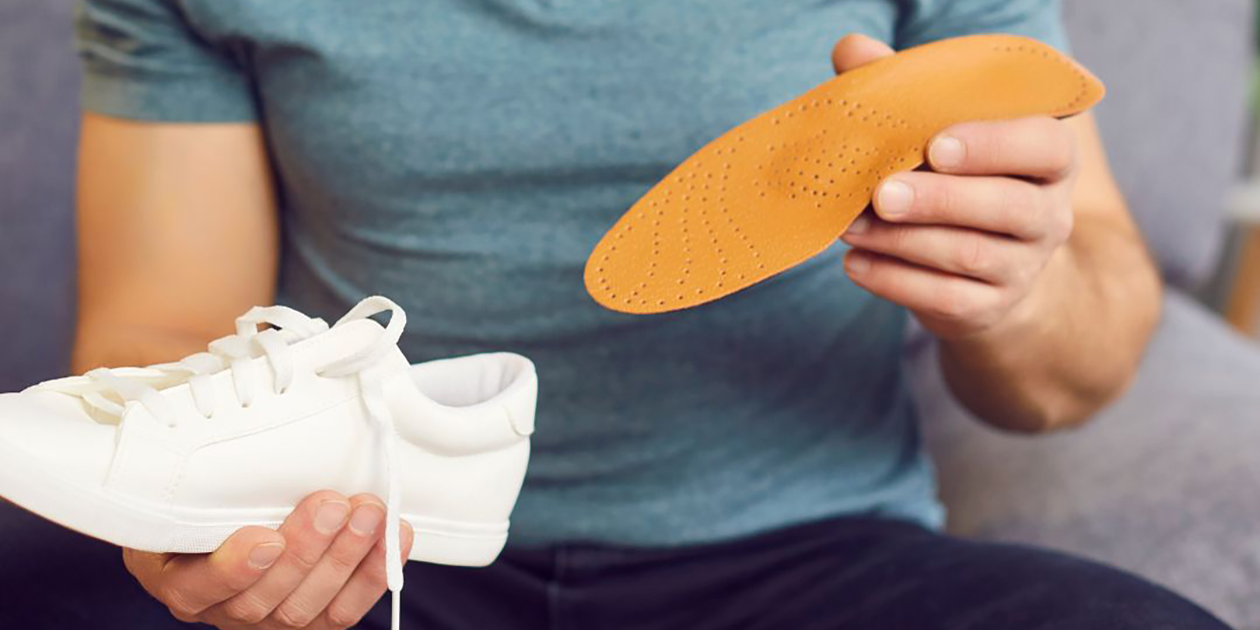Custom Orthotics vs. Over-the-Counter Insoles: What Your Patients Need for Heel Pain
March 4, 2025 •Podiatry Associates of Indiana

Heel pain is among the most frequent complaints seen in primary care, sports medicine, orthopedic, and physical therapy settings. For many patients, this discomfort can significantly impact mobility, daily activities, and overall quality of life. As a referring provider, knowing when to recommend custom orthotics versus over-the-counter (OTC) insoles can profoundly influence a patient's recovery trajectory.
When conservative management stalls, recognizing the need for specialized podiatric intervention can help your patients achieve faster relief and avoid long-term complications.
The Complexity of Heel Pain
Heel pain is not a singular diagnosis; it encompasses a variety of conditions, including:
- Plantar fasciitis (the most common cause)
- Achilles tendinitis
- Heel spurs
- Sever’s disease (in pediatric patients)
- Fat pad atrophy in older adults
- Nerve entrapments (e.g., Baxter’s neuropathy)
Each of these conditions may present similarly but require nuanced management strategies. Addressing the mechanical cause behind the pain, rather than solely treating symptoms, is vital for long-term success.
Orthotic devices—both custom and prefabricated—play a central role in redistributing pressure, supporting correct alignment, and enhancing overall biomechanics.
Over-the-Counter Insoles: A First-Line Option?
OTC insoles are widely accessible and designed to fit a range of foot types and shoe styles. Brands like Dr. Scholl’s, Superfeet, and Powerstep offer semi-rigid arch supports and cushioned insoles for general use.
Advantages of OTC Insoles:
- Cost-effective, typically ranging from $30 to $80
- Immediate availability without a prescription
- Provide cushioning that can reduce acute heel soreness
- Useful for patients with mild or temporary symptoms
However, OTC insoles are mass-produced based on generalized foot shapes. They lack the precision needed to correct individual structural abnormalities like overpronation, high arches, or leg-length discrepancies.
Limitations of OTC Insoles:
- One-size-fits-most approach
- Diminished effectiveness in moderate to severe biomechanical pathology
- Materials may compress or degrade within months
- May not provide sufficient heel stabilization, especially in active or overweight patients
For patients with minor heel discomfort linked to standing for long periods or new exercise routines, OTC options may suffice temporarily. However, for chronic or mechanically driven heel pain, these solutions often fall short.
Custom Orthotics: Tailored to the Individual
Custom orthotics are precision medical devices prescribed after an in-depth evaluation by a podiatrist. They are fabricated based on a three-dimensional mold or scan of the patient’s foot, allowing for meticulous customization.
Key Benefits of Custom Orthotics:
- Personalized biomechanical correction: Addresses overpronation, supination, limb length discrepancies, and more.
- Durability: Typically constructed from higher-quality materials that last several years.
- Activity-specific design: Custom options for athletes, workers who stand for prolonged periods, and individuals with unique footwear needs.
- Preventative care: Reduce the risk of secondary issues like knee, hip, and lower back pain due to abnormal gait.
Custom orthotics for heel pain specifically offload pressure from sensitive areas, support the plantar fascia, and realign foot mechanics to promote natural healing.
Clinical Evidence Supporting Custom Orthotics
Several studies support the efficacy of custom orthotics for heel pain:
- A 2018 randomized controlled trial published in The Foot demonstrated that patients with plantar fasciitis using custom orthoses experienced greater pain reduction and functional improvement compared to those using prefabricated insoles.
- Research in Journal of Orthopaedic & Sports Physical Therapy indicates that custom orthotics not only alleviate heel pain but also help prevent recurrences when combined with physical therapy.
Given the evidence, custom orthotics should be considered an essential part of the treatment plan for patients with persistent, recurrent, or disabling heel pain.
When to Refer a Patient to a Podiatrist
Timely referral to a podiatrist ensures optimal outcomes for patients experiencing heel pain that:
- Persists longer than 2–4 weeks despite initial conservative care
- Worsens with increased activity
- Impacts gait, balance, or mobility
- Is associated with visible deformities (e.g., collapsed arches, severe supination)
- Causes significant limitations in work, exercise, or daily living
A podiatrist will perform a comprehensive evaluation, including a detailed gait analysis, palpation tests, imaging if needed, and advanced assessments such as pressure mapping. From this, a targeted orthotic strategy can be developed—whether through custom devices, physical therapy referrals, footwear recommendations, or additional interventions.
Custom Care for Optimal Recovery
Although over-the-counter insoles may provide an accessible starting point for heel pain management, they often lack the specificity required for lasting relief. Custom orthotics, when prescribed by a podiatrist, offer a biomechanically tailored approach that can correct underlying causes, support natural healing, and prevent recurrence.
As a referring provider, recognizing the differences between these options and partnering with a podiatric specialist can greatly enhance your patient care outcomes. When heel pain persists or worsens, a timely referral ensures your patients receive the advanced support and custom solutions they need to get back on their feet—comfortably and confidently. Reach out to Podiatry Associates of Indiana and help your patient get back on track.

